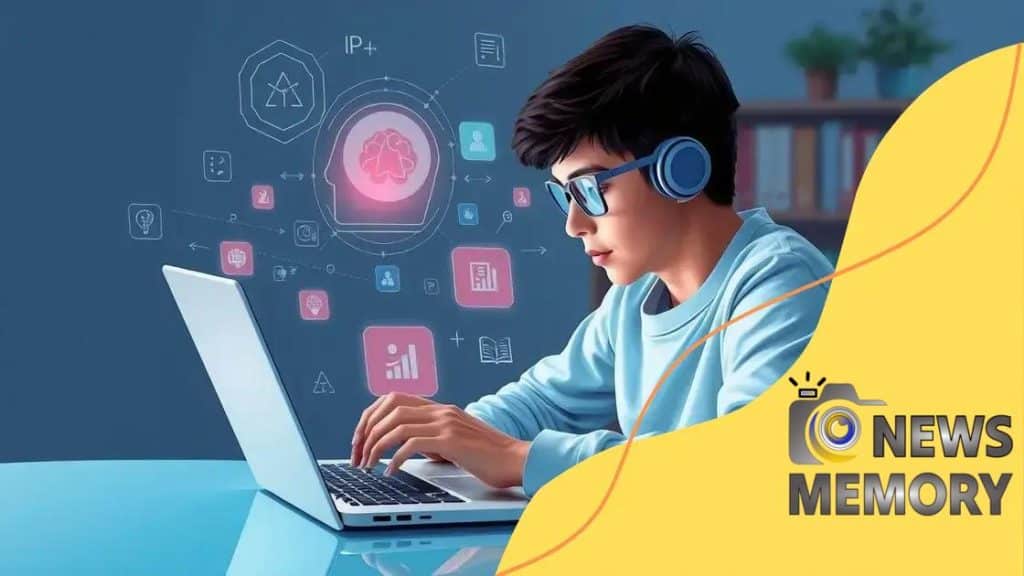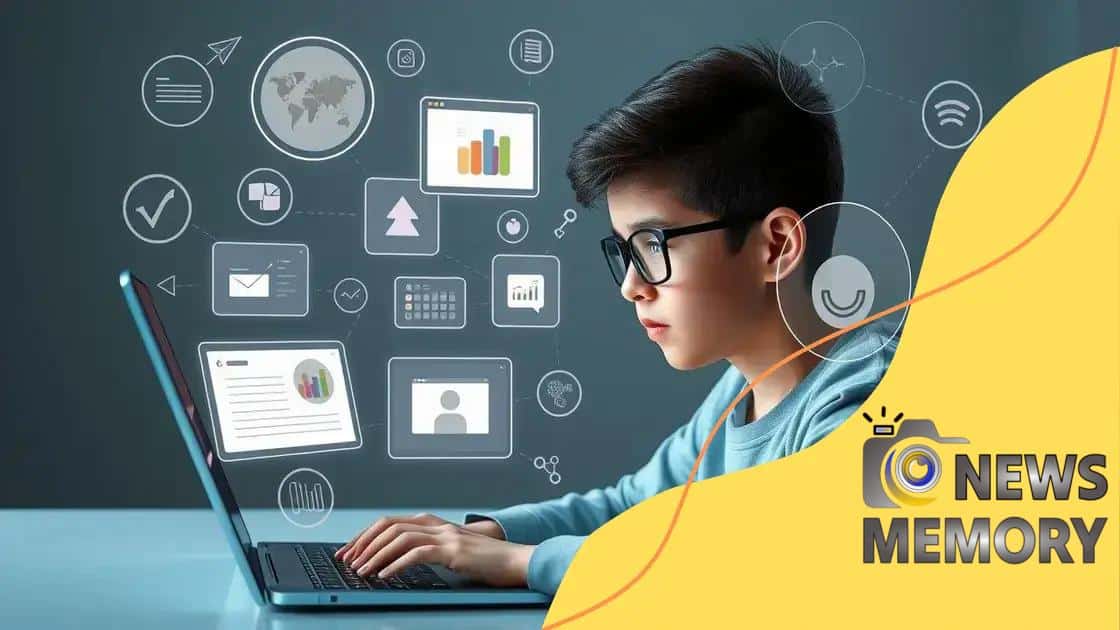How AI-powered tutoring systems are changing learning dynamics

AI-powered tutoring systems enhance personalized learning dynamics by adapting to individual students’ needs, improving engagement, and providing tailored educational experiences through data-driven insights.
How AI-powered tutoring systems are reshaping the educational landscape by offering tailored learning experiences. Have you ever wondered how technology can enhance your learning journey? Let’s dive into this transformation.
Understanding AI-powered tutoring systems
AI-powered tutoring systems are transforming education by providing tailored support to learners. These systems utilize artificial intelligence to adapt to individual student needs, enhancing their learning experience.
What are AI-powered tutoring systems?
AI-powered tutoring systems are platforms that leverage advanced algorithms to deliver personalized education. They assess a student’s strengths and weaknesses and adjust the teaching method accordingly. This leads to a more effective learning environment.
Key Features
- Personalization: Each student receives content that matches their learning pace and style.
- Instant Feedback: Students can quickly understand their mistakes and correct them in real-time.
- Engagement: Interactive elements keep students motivated and curious.
- Data Analytics: These systems analyze student performance, helping educators track progress.
In more conventional teaching setups, students often receive a one-size-fits-all experience. However, AI tutoring systems break this mold. They consider various factors, such as previous performance and learning preferences, to tailor the experience. This isn’t just about passing tests; it’s about nurturing a deeper understanding of subjects.
Learn more about how AI adapts to unique learning styles. For example, some students may excel in visual tasks, while others perform better with verbal instructions. AI systems harness this information to facilitate a customized learning journey.
Applications of AI Tutoring
From elementary education to college-level courses, AI tutoring systems are applied across various educational settings. They can assist in teaching languages, mathematics, and even test preparation. The versatility of these tools highlights their importance in modern education.
Consider how traditional tutors offer a tailored approach, and you’ll see similarities with AI systems. However, AI offers the advantage of scalability, providing resources to many students simultaneously. This means more learners can benefit from personalized instruction than ever before.
Benefits of AI in personalized learning
The benefits of AI in personalized learning are profound and far-reaching. With AI at the heart of education, students can experience more tailored and effective learning processes.
Enhanced Engagement
AI-driven systems can create interactive learning experiences. This engagement is crucial for keeping students excited about their education. By incorporating games, quizzes, and real-time feedback, AI motivates students to participate actively.
Tailored Content
Another significant advantage of AI is the ability to personalize content. Every learner has unique needs and preferences. AI can adjust lessons based on a student’s pace and proficiency level. This is especially helpful for students who struggle in traditional classroom settings.
- Adaptability: Lessons are modified according to the learner’s progress.
- Variety: Students encounter different materials tailored to their interests.
- Support: AI systems provide additional help on challenging topics.
Moreover, AI’s ability to analyze data means it can identify which areas a student might need further assistance with. This helps in providing focused support that addresses gaps in knowledge. As students progress, the AI continues to evolve, offering an ever-improving learning path.
Consider how important it is for learners to understand their progress. AI systems can track and report performance metrics. This helps students see their improvements, fostering a sense of achievement. With this awareness, students are more likely to remain motivated and dedicated to their studies.
Accessibility
AI in personalized learning also promotes accessibility. It allows students with different learning needs to receive the support they need. For instance, text-to-speech features assist those with reading difficulties, while visual aids help learners who are more visually oriented. The result is an inclusive environment that empowers every student.
Furthermore, by breaking geographical barriers, AI-powered platforms can reach students worldwide. This opens doors for learners who might not have access to quality education. Through online platforms, students can access resources anytime, anywhere, making education more flexible and accommodating.
How AI adapts to different learning styles

AI adapts to different learning styles by analyzing how individual students learn best. This personalization makes education more effective and engaging.
Understanding Learning Styles
Every student has a unique way of absorbing information. Some are visual learners, while others prefer auditory or kinesthetic methods. AI systems take these differences into account, creating a customized experience for each learner.
Dynamic Content Delivery
AI can modify lessons in real-time. For example, if a student struggles with written explanations, the system can offer video tutorials or interactive simulations instead. This flexibility encourages deeper understanding and retention of information.
- Visual Learning: Incorporates images, videos, and diagrams.
- Auditory Learning: Uses podcasts and voice recordings.
- Kinesthetic Learning: Engages students with hands-on activities.
As students interact with AI-powered platforms, the system gathers data on their preferences and performance, leading to ongoing adjustments. This feedback loop is crucial for supporting each learner’s journey. The AI’s capacity to learn and adapt ensures that students receive instruction in the way that suits them best.
Beyond just content, AI can also adjust the difficulty level of tasks based on student performance. If a student excels in a subject, the system can introduce more challenging materials. Conversely, it can provide additional support and resources for those who may need extra help. This tailored approach not only boosts confidence but also enhances academic success.
Real-World Applications
AI is already making waves in classrooms worldwide. Schools are using AI to support various subjects, from math to languages. As educators adopt these technologies, they find that students become more engaged and achieve better outcomes.
Consider how online learning platforms utilize AI to create unique learning pathways. By assessing past performance and adapting to new challenges, these systems help students navigate their educational journeys more effectively. In this way, AI doesn’t just support learning; it revolutionizes it.
Real-world examples of AI tutoring success
Real-world examples of AI tutoring success showcase how technology is changing education today. Numerous schools and organizations are implementing AI systems that improve student outcomes.
Case Study: Carnegie Learning
Carnegie Learning uses AI to enhance math tutoring. Their program adapts to individual student performance, offering personalized feedback and engaging lessons. As a result, students show improved scores and a better grasp of mathematical concepts.
Example: Duolingo
Duolingo, a popular language-learning app, employs AI to personalize learning paths. The app assesses user proficiency and adjusts difficulty accordingly. This tailored approach makes learning a new language more fun and accessible for millions.
- Gamification: Learners stay motivated through rewards and challenges.
- Immediate Feedback: Users receive instant corrections to enhance learning.
- Diverse Content: Lessons vary based on user interests and strengths.
Another notable example is DreamBox Learning, which focuses on K-8 mathematics. Their AI-driven platform adjusts in real-time, offering tailored lessons based on student answers. This constant adaptation results in higher engagement and better learning outcomes.
With AI tutoring systems, students learn at their own pace. For instance, a struggling student may need extra practice with fractions, while an advanced student can explore more advanced topics. This flexibility supports a range of learning needs.
Global Reach: Yuxi Global
Internationally, Yuxi Global provides personalized learning solutions powered by AI in China. By assessing individual learning styles and preferences, they create custom tutoring programs that cater to students from diverse backgrounds.
Success stories from these platforms illustrate the potential of AI in education. As schools and organizations adopt these technologies, we can expect positive changes in how students learn and succeed academically.
Future trends in AI-based education
The future trends in AI-based education are exciting and full of potential. As technology advances, we can expect to see even more innovative uses of AI in classrooms and learning environments.
Personalized Learning Experiences
One major trend is the continued rise of personalized learning experiences. AI systems will increasingly adapt to individual needs, allowing for customized lessons that cater to each student’s strengths. This will enhance engagement and improve learning outcomes.
Data-Driven Insights
Another important trend is the growth of data-driven insights. AI will analyze student performance and provide valuable data to educators. This information can guide teaching strategies and curriculum development. Teachers will be able to identify areas where students struggle and offer targeted support.
- Predictive Analytics: AI can predict student outcomes and help educators intervene early.
- Adaptive Assessments: Tests that adjust in real-time based on student responses.
- Improved Targeting: Tailoring resources to specific student needs.
In addition, we can expect a greater focus on collaborative learning through AI. Virtual classrooms will encourage students to work together on projects, even if they are miles apart. This not only builds teamwork skills but also enriches learning through peer interaction.
Augmented and virtual reality (AR/VR) technologies are also anticipated to become more common in education. These tools, powered by AI, allow students to experience immersive learning environments. Imagine studying history by virtually exploring ancient civilizations or practicing science experiments in a realistic lab setting.
Integration with Daily Life
Furthermore, AI will integrate more into daily life, making learning accessible anytime, anywhere. Mobile apps and platforms will provide support outside traditional classroom settings. Students can engage with learning materials whenever they have free time, allowing for a more flexible education experience.
Overall, the future of AI in education promises to be transformative. As these technologies expand, they will redefine the way we teach and learn, creating opportunities for all learners to succeed.
FAQ – Frequently Asked Questions about AI in Education
How does AI enhance personalized learning in education?
AI analyzes individual student performance and adapts lessons to meet their unique needs, making learning more effective.
What are the benefits of using AI in classrooms?
AI improves engagement, provides instant feedback, and helps teachers tailor their approaches based on data-driven insights.
Can AI technology support students with different learning styles?
Yes, AI can deliver content in various formats to accommodate visual, auditory, and kinesthetic learners, enhancing their educational experience.
What does the future hold for AI in education?
The future promises greater integration of AI, making learning more accessible and effective through personalized experiences and innovative technologies.





